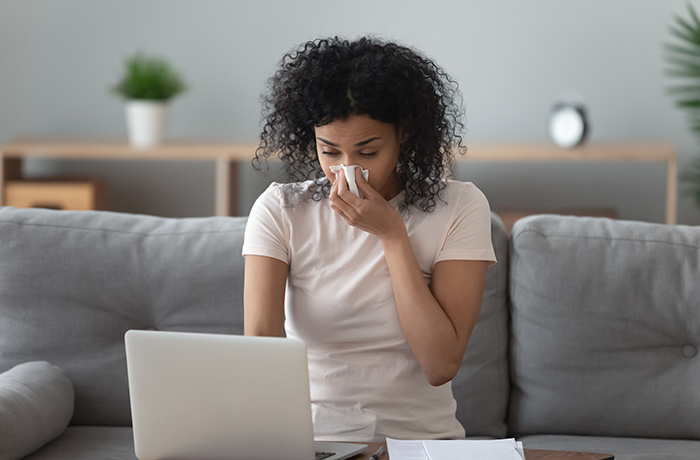
’Tis the season for runny and stuffy noses. Instead of just reaching for a cold medicine, what can you do to relieve clogged nasal passages? Nasal irrigation devices (often simply referred to as neti pots) can help you or your child breathe easier, but proper use is important.
“Studies demonstrate that nasal saline irrigation is helpful to restore the health of the nasal and sinus mucosa,” said Nathan Salinas, MD, board-certified otolaryngologist with Holland Hospital Ear, Nose & Throat. “Saline irrigations are natural, well-tolerated, effective, and they can also provide a delivery system for medications added into the saline if needed.”
Dr. Salinas advises irrigation squeeze bottles over neti pots to deliver the saline solution. (NeilMed® makes a 240mL squeeze bottle available over the counter.)
“Neti pots are gravity-dependent and therefore less effective when the nasal anatomy is narrowed, or the mucosa is swollen or irritated,” he added. “People with environmental allergies and chronic sinusitis should consider diligent, everyday use, similar to tooth brushing on a daily basis.” In addition to flushing out allergens, topical nasal saline irrigations can help minimize acute upper respiratory tract infections.
How to Use a Nasal Irrigation Device
For nasal rinses, it’s important to remember that using water straight from your tap is not safe. Some tap water contains low levels of organisms and bacteria that can stay alive in nasal passages and potentially lead to serious infections.
Use distilled or sterile water (grocery store label will state “distilled” or “sterile”), or boiled and cooled tap water. Boil tap water for three to five minutes, then wait until it’s cooled to a lukewarm temperature. Previously boiled water may be kept in a clean, closed container for use within 24 hours. You can also consider using water passed through a filter designed to trap infectious organisms.
“I recommend clean, distilled water mixed with a pre-packaged salt mixture,” Dr. Salinas said. (If you prefer to make your own solution, you can find a recipe here.)
For optimal safety, be sure to follow the instructions provided with your specific device. A few additional tips when using an irrigation squeeze bottle:
- Wash and dry your hands before every use.
- Check to make sure your device is clean and completely dry.
- Look down at your toes as the bottle is held in the upright position.
- Gently squeeze the bottle so saline solution flows up through the sinonasal cavities and does not rush back into the throat.
- Between uses, wash the device and dry the inside with a paper towel (or allow to air dry).
- If you do not understand the instructions on your device, consult your doctor or pharmacist.
Children and Nasal Irrigation
Many parents will find that nasal saline irrigations are beneficial for their kids, particularly children who struggle with frequent upper respiratory infections, allergies and nosebleeds. Nasal saline irrigation is a natural and safe option for children, as it can be a great way to keep the sinonasal cavities healthy without medicines. However, a child must be able to hold their head in the appropriate position and generally tolerate saline rinses. Until a child reaches age 12, parents should use a smaller bottle (e.g., NeilMed 120mL squeeze bottle).
Regardless of age, talk to your health care provider to determine whether nasal rinsing is the right solution for your condition. If your symptoms aren’t relieved or worsen after nasal rinsing, visit your doctor, especially if you experience a fever, nosebleeds or headaches while using the nasal rinse.
If you have concerns about conditions related to the head, neck, ear, nose or throat, make an appointment with Dr. Nathan Salinas online or call (616) 393-2190.